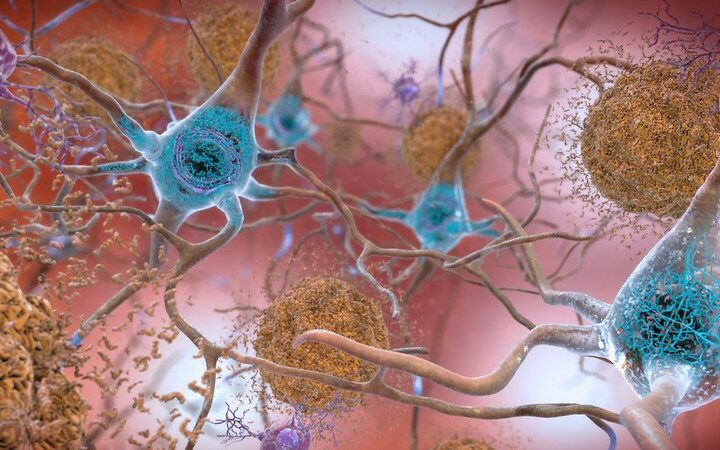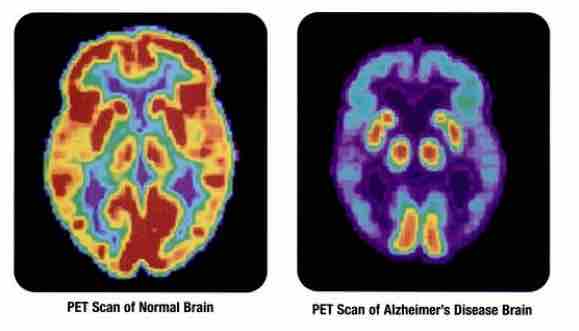Scientists are exploring the role of tau tangles in Alzheimer's, and whether addressing these misfolded proteins could treat the disease. Here's what you need to know.
The busy life of brain cells is not so different from the supply chain that supports online purchases. A transaction is registered at a packaging center, the right product is boxed up, and then it is sent on its way with a delivery driver to your address. If there are unexpected road blockages, the packages you ordered cannot be delivered efficiently.
In the human brain, neurons also have a complex supply chain. Packages of proteins and other molecules are constantly being delivered to different regions of the cell. The “highways” are made up of proteins called microtubules, which can be taken apart and rearranged. Tau proteins are critical infrastructure in our brains that help to stabilize these microtubules, paving the way for proteins and other molecules to be transported from the cell’s operation center all the way to the end of the cell, down the long thread-like protrusion called an axon. Unlike many other cells in the body, brain cells are remarkable because they come in many shapes and sizes. While the cells in the brain and nervous system are short in width, their axon can extend more than a millimeter and up to three feet to interface with another cell.
However, in Alzheimer’s disease, this whole process is upended. In the brains of people with Alzheimer’s, tau proteins start amassing in neurofibrillary tangles, obstructing the cellular highways and getting in the way of synaptic communication between neurons. Eventually, they can even contribute to the death of brain cells.
Like the presence of amyloid plaques, tau tangles are hallmarks of Alzheimer’s. The exact relationship between the disease and these hallmarks, however, is still obscured: Are these neurofibrillary tangles of tau proteins a byproduct of Alzheimer’s? Or are they the root cause? Answering these questions could be the key to treating Alzheimer’s.
How do tau tangles form in Alzheimer’s?
If there is a small mistake when the cell is creating the tau protein, it becomes misshapen. These misshapen tau proteins clump together and even attract healthy tau proteins, forming tangles and disrupting the usual function of the cell. Then, misshapen tau proteins can spread between cells and produce these tangles elsewhere.
What can we learn from tau tangles in an Alzheimer’s brain?
Tau tangles are more strongly associated with Alzheimer’s symptom severity, even if they are thought to form only after amyloid plaques. Some brain imaging studies suggest that tau tangles, as opposed to amyloid plaques, drive disease progression.
Another study suggests that there are distinct trajectories of tau tangles in the brain. Where in the brian these tangles first originate correlated with cognitive symptoms and different prognoses.
As a result, many researchers are turning to tau tangles as biomarkers — and potential targets — for treating Alzheimer’s.
Tau tangles as a target for Alzheimer’s treatment
Since these neurofibrillary tangles are so closely linked with the progression of Alzheimer’s, researchers wonder whether getting rid of them could help get rid of Alzheimer’s altogether.
Now, they are working to develop drugs and vaccines that can clear these tangles from the brain. This approach of getting rid of a key Alzheimer’s biomarker in order to, hopefully, get rid of Alzheimer’s is a familiar one: For example, the drug Aduhelm is designed to treat Alzheimer’s by way of clearing amyloid plaques in the brain. Other drugs and vaccines to clear or even prevent amyloid build-up are in development.
This is the case for tau, too: LMTM, a drug developed by TauRx Therapeutics, is currently in Phase 3 trials, the last stage of testing before a drug can be approved. Its makers hope it will prove successful in preventing misshapen tau proteins from sticking together, and subsequently slow the progression of Alzheimer’s.
According to Dr. Lon Schneider at the California Alzheimer’s Disease Center at USC, who worked in the Aduhelm clinical trials, some researchers also have a running theory that decreasing amyloid could in turn decrease tau. “Perhaps decreasing amyloid creates a lag effect, and somewhere as a result of decreasing amyloid, we’re able to decrease tau — the abnormal tau protein that might be more involved with memory,” Schneider told Being Patient in a BrainTalk. “This is possible, but this is a guess, this is a hypothesis.” Drug developers are looking at these biomarkers and the disease pathology’s response to the presence — and absence — in tandem.
Other companies are working on treatments designed to clear tau proteins from the brain, which are still in earlier stages of development. But, in the coming years, scientists will continue to increase the understanding of amyloid plaques and tau tangles and their role in Alzheimer’s, and work to leverage that understanding in order to clear both, hopefully halting the progression of the disease — or preventing it from ever taking hold.



